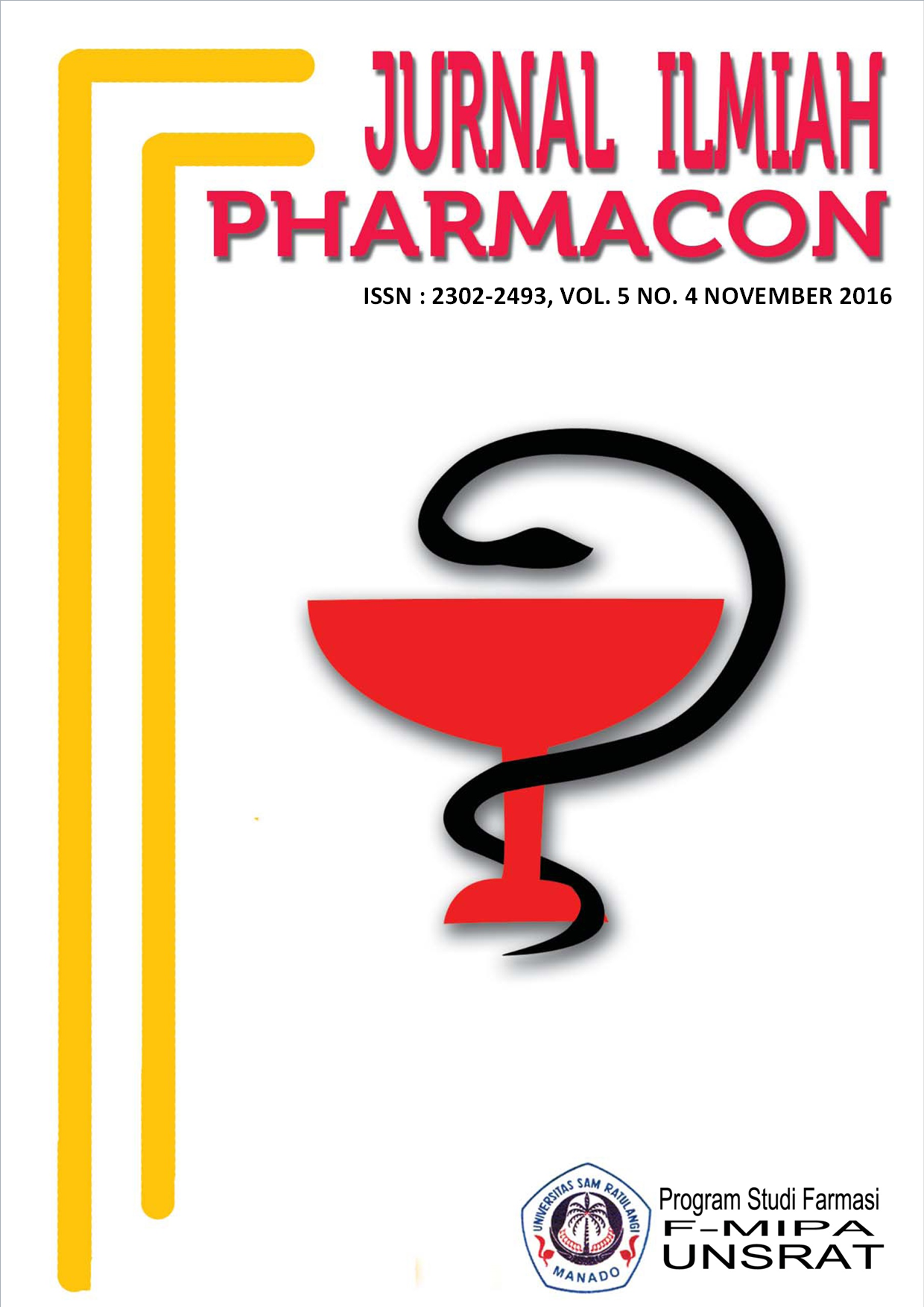HUBUNGAN ANTARA PENGETAHUAN DAN SIKAP DENGAN TINDAKAN PENCEGAHAN PENYAKIT MALARIA DI WILAYAH KERJA PUSKESMAS BACAN TIMUR KABUPATEN HALMAHERA SELATAN 2016
DOI:
https://doi.org/10.35799/pha.5.2016.14079Abstract
HUBUNGAN ANTARA PENGETAHUAN DAN SIKAP DENGAN TINDAKAN PENCEGAHAN PENYAKIT MALARIA DI WILAYAH KERJA PUSKESMAS BACAN TIMUR KABUPATEN
HALMAHERA SELATAN 2016
Pilmeks D Layan1), Rahayu H. Akili1), Dina V. Rombot1)
1)Fakultas Kesehatan Masyarakat UNSRAT Manado, 95115
ABSTRACT
Five provinces in Indonesia with Annual Parasite Incidence (API) per 1000 highest popula on in 2014 were Papua province (29, 57%), West Papua (20, 85%), Nusa Tenggara Timur (12, 81%), Maluku province (6, 00%), and North Maluku (3, 32%). According to East Bacan Health Centre in 2014, the number of Malaria cases were 300 cases and the number of clinical Malaria cases were 204 cases, if compared in 2013, there were only about 191 cases. Malaria cases were increased in east Bacan health center in 2014. According to the data from east Bacan health center on January un l November 2015, there were 233 cases. This research aims to >nd out the rela onship between knowledge and a tude with Malaria precau on in east Bacan health center, South Halmahera district.This research is an analy cal survey with cross sec onal plan. Samples were determined by Slovin formula and Simple Random Sampling method with 85 people. The data retrieval was done by using ques onnaire with interview method. The rela onship analysis was done by using Chi Square test with degree of con>dence 95% and α = 0, 05. Research Result The analysis between knowledge with Malaria preven on ac on shows that p value = 0, 443 and the rela onship between a tude with Malaria precau on shows the p value = 0, 001. Conclusion this research, There is no rela onship between knowledge with Malaria precau on and there is a connect on between a tudes with Malaria precause on.
Keywords: Knowledge, Attitude, Precau on, and Malaria
ABSTRAK
Lima Provinsi dengan Annual Parasite Incidence (API) per 1.000 penduduk tertinggi pada tahun 2014 adalah Provinsi Papua (29,57%), Papua Barat (20,85%), Nusa Tenggara Timur (12,81%), Maluku (6,00%) dan Maluku Utara (3,32%). Pada wilayah kerja Puskesmas Bacan Timur tahun 2014, jumlah kasus malaria yaitu 300 kasus dan jumlah kasus malaria klinis 204 kasus, jika dibandingkan tahun 2013 kasus malaria sebanyak 191 kasus. Kasus malaria mengalami peningkatan di Puskesmas Bacan Timur pada tahun 2014. Data Puskesmas Bacan Timur pada bulan Januari – November tahun 2015 sebanyak 233 kasus. Tujuan penelitian ini untuk mengetahui hubungan antara pengetahuan dan sikap dengan tindakan pencegahan penyakit malaria di Wilayah Kerja Puskesmas Bacan Timur Kabupaten Halmahera Selatan.Penelitian ini merupakan penelitian survei analitik dengan rancangan cross sectional. Sampel ditentukan dengan rumus Slovin dan metode Simple Random Sampling sebanyak 85 orang. Pengambilan data menggunakan kuesioner dengan metode wawancara. Analisis hubungan menggunakan uji chi square dengan derajat kepercayaan 95% dan α = 0,05 Hasil analisis hubungan antara Pengetahuan dengan Tindakan Pencegahan Penyakit Malaria menunujukkan nilai p value = 0,443, dan hubungan antara Sikap dengan Tindakan Pencegahan Penyakit Malaria menunjukkan p value = 0,001.Kesimpulan dari penelitian ini  tidak terdapat hubungan antara Pengetahuan dengan Tindakan Pencegahan Penyakit Malaria dan terdapat hubungan antara Sikap dengan Tindakan Pencegahan Penyakit Malaria.
Â
Kata Kunci: Pengetahuan, Sikap, Tindakan Pencegahan, dan Malaria
Downloads
Published
How to Cite
Issue
Section
License
Authors who publish with this journal agree to the following terms:
- Authors retain copyright and grant the journal right of first publication with the work simultaneously licensed under a Creative Commons Attribution-NonCommercial 4.0 International License that allows others to share the work with an acknowledgement of the work's authorship and initial publication in this journal.
- Authors are permitted and encouraged to post their work online (e.g., in institutional repositories or on their website) prior to and during the submission process, as it can lead to productive exchanges, as well as earlier and greater citation of published work (See The Effect of Open Access)










